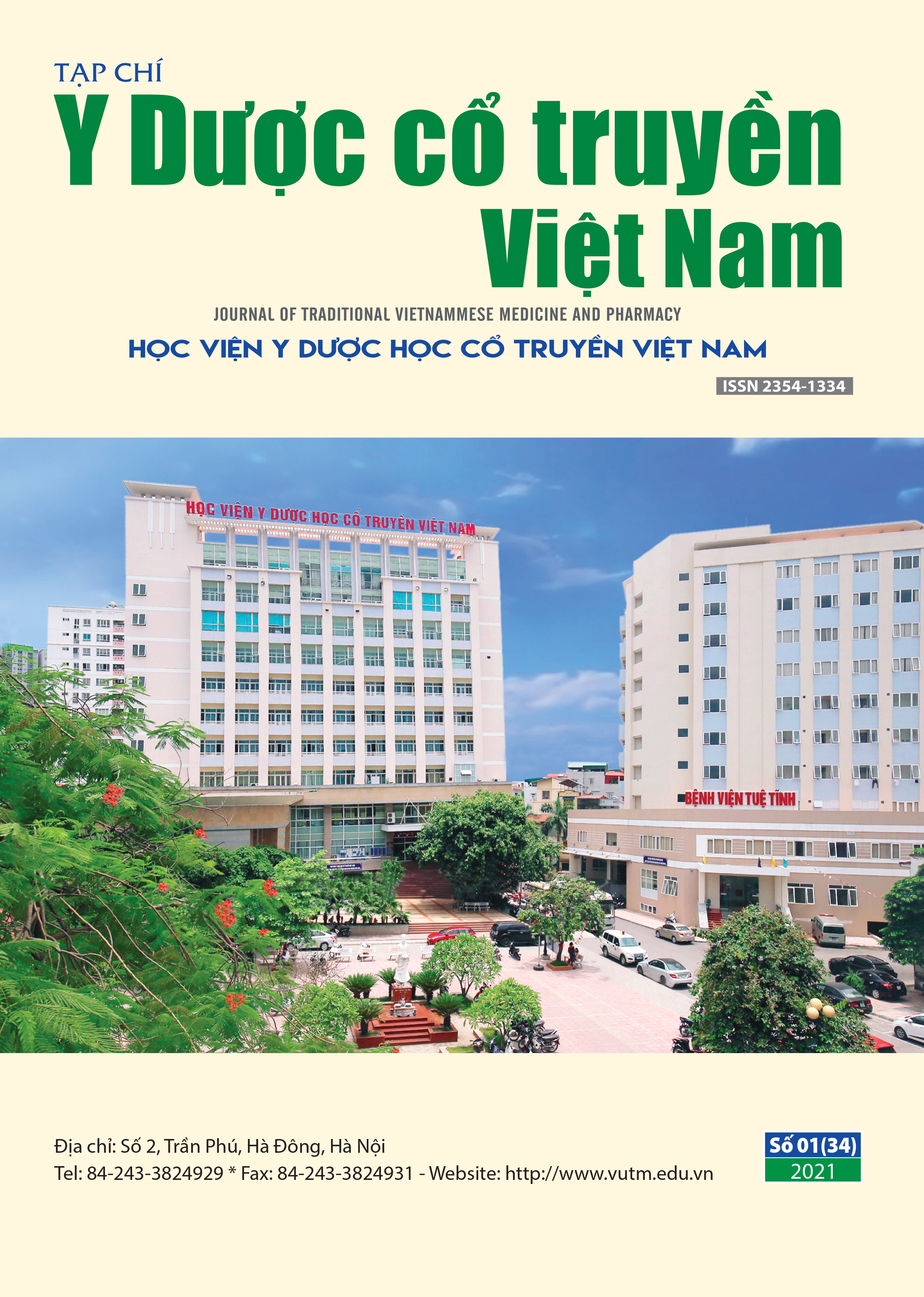Evaluate the analgesic effect and motion improvment In patients with periarthritis of the shoulder by electronic acupuncture combined with Nguyen Van Huong exercise
Main Article Content
Abstract
Objectives: The research aimed at evaluating the effects of electric acupuncture with Nguyen Van Huong’s exercise in periarthritis shoulder.
Methods and materials: 30 patients with periarthritis shoulder were treated with electric acupuncture with Nguyen Van Huong’s exercise for 20 days.
Results and Conclusions: VAS-scale pain improved: decreased from 6.0 ± 1.2 points to 1.3 ± 0.47 points; The degree of limited movement of the shoulder joint movement type has a marked improvement, specifically before treatment, the average level of movement of the shoulder joint movement is 55.87 ± 27.3 degrees after treatment 124.13 ± 34.32 : Results of treatment according to Constant CR and Murley AHG 1987 showed that the number of patients with good scores was 53.3%. Conclusion: The effect of the electro-acupuncture with Nguyen Van Huong’s exercise has a quite good therapeutic effect, has analgesic effect, and improves the level of disease activity in the treatment of periarthritis shoulder.
Article Details
Keywords
Electric acupuncture, Nguyen Van Huong’s exercise, Periarthritis shoulder.
References
2. Học viện Trung y Nam Kinh (1992), Trung y học khải luận, Hội y học cổ truyền dân tộc thành phố Hồ Chí Minh Xuất bản.
3. Nguyễn Văn Hưởng (2012), phương pháp dưỡng sinh, nhà xuất bản y học.
4. Nguyễn Thị Nga (2006), Đánh giá hiệu quả điều trị viêm quanh khớp vai thể đơn thuần bằng thuốc kết hợp vật lý trị liệu - phục hồi chức năng, Luận văn Bác sỹ Chuyên khoa II, Trường Đại học Y Hà Nội.
5. Trần Hoàng Tuấn (2020), “Đánh giá kết quả của sóng xung kích kết hợp điện châm và xoa bóp bấm huyệt điều trị viêm quanh khớp vai thể đơn thuần”, Luận văn Thạc sĩ Y học, Học viện Y Dược học cổ truyền Việt Nam.
6. Baron M., Steele R. (2007), “Development of the McGill Range of Motion Index”, Clin Orthop Relat Res, 456, pp. 42-50.
7. Constant C. R., Murley A. H. (1987), “A clinical method of functional assessment of the shoulder”,
Clin Orthop Relat Res, (214), pp. 160-166.
8. Huskisson E. C. (1974), “Measurement of pain”, Lancet, 2 (7889), pp. 1127-1158.

